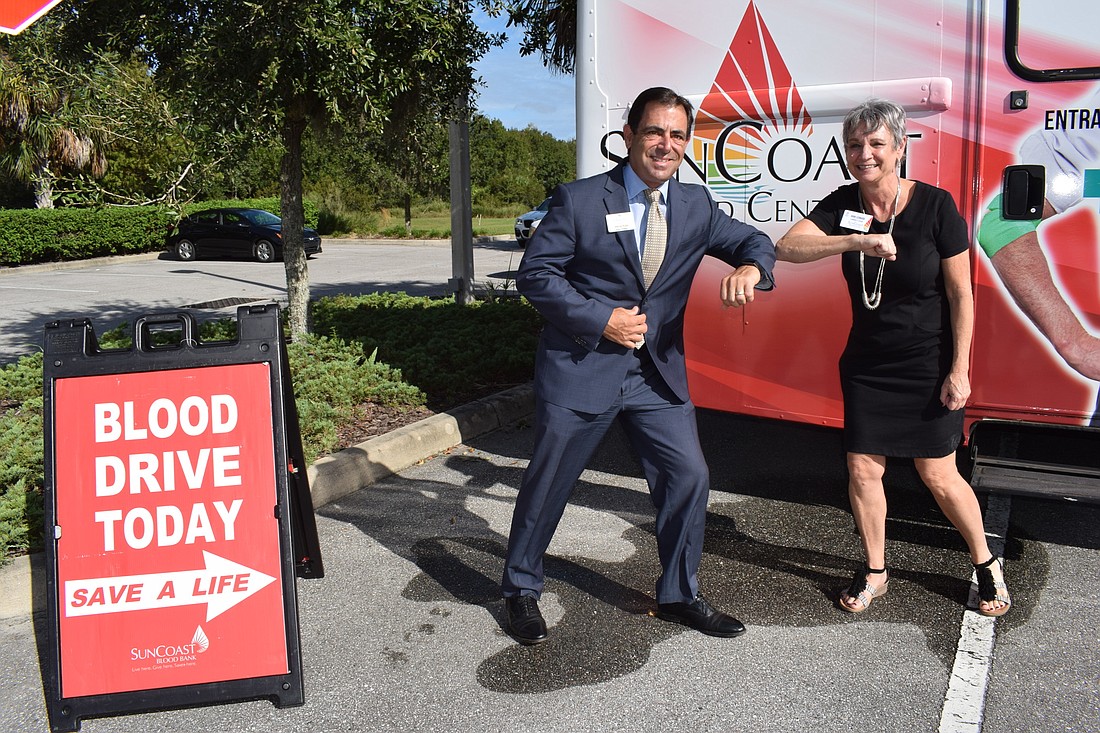- March 30, 2025
-
-
Loading

Loading

When it comes to philanthropy, there is no shortage of options in our area. But how does one choose the organization with the most need or how best to help?
It’s that type of research, knowledge and relationships that Lakewood Ranch Community Fund President David Fink says allows his nonprofit to stand alone in East County.
Since 2002, the community fund has given grants to approximately 150 nonprofit organizations while getting more than 60 grant applications a year. Only about a third of them are selected to receive funds.
That’s where the research becomes so important.
Each year, the community fund puts together a 15-person grant team made up of its advisory board members, local business leaders and those who have given significant amounts to the fund. They pull the grant applications, which Fink says contain extensive information about each nonprofit and the expected use of the funds. Then the research begins.
They look through each nonprofit’s financial information through IRS Form 990 reports along with checking resources through assessment organizations, such as Charity Navigator.
Members of the team look into how effective each organization has been realizing its goals and how efficient each has been financially. After the grants have been awarded, members of the grants team follow up with each nonprofit to make sure the money went to its intended purpose.
“We take that responsibility very seriously,” Fink says.
All that information garnered over the years came in handy during the COVID-19 pandemic. The community fund made $165,000 available in grants, but it contacted area nonprofits that it knew would have special needs due to previous years’ research.
Tidewell Foundation was one of those nonprofits, and the community fund gave it a $10,000 grant to purchase personal protection equipment and pay extra expenses related to staffing.
Through conversations in awarding the first grant, the community fund board learned about a program that Tidewell was considering to help its patients improve their quality of life during their final days. The pandemic threatened to put that program on hold.
The fund came back with a $5,000 grant to purchase the equipment and monthly subscription needed to run the program, a virtual reality system that allows those living in senior living facilities and hospice houses to make connections and reduce isolation.
Debbie Mason, the president of Tidewell Foundation Sarasota, says the two grants made a huge difference. The technology already is paying off.
She says Tidewell has clinical evidence that when its patients use the virtual reality system, their breathing becomes improved, their heart rate slows, and their pain decreases.
Would Lakewood Ranch area residents have known about the virtual reality system and what Tidewell Foundation was trying to accomplish? Possibly not.
“No nonprofit here makes the impact of the community fund,” Fink says. “None focus solely on the benefit of Lakewood Ranch. We don’t have a pet cause. We let the causes bubble up.”
One of the causes during the pandemic was SunCoast Blood Centers’ hope to land a grant to help it buy a van that could go directly to the homes of those willing to donate blood. The fund gave $13,000 toward the van.
“The need was there, and we were funded,” says Joan Leonard, the community liaison for SunCoast Blood Centers. “That doesn’t happen with individual donors. It takes time.”
Amanda Tullidge, a principal at Blalock Walters, has been an advisory board member for six years. She grew up watching her mom, Julie Smith, do the fund’s spreadsheets at home. She later joined the board and began to understand that the community has hidden needs.
“As soon as you scratch the surface, you see a lot of need,” Tullidge says. “People have Parkinson’s and epilepsy, and we have lots of kids who have special needs. If you live here, you might not be able to put in the time researching nonprofits in Lakewood Ranch. But you want to know your money is going to someone reputable.”
Over the years, the fund has relied heavily on the business community and construction industry for the bulk of its donations. To help spread its reach and involve more people, board member Monaca Onstad is leading the fund’s Resident Outreach Committee to encourage individuals to give and become involved.
“I would like to see the fund be the place that Lakewood Ranch residents give,” says Onstad, the director of community relations for Lakewood Ranch Communities, which has incorporated the fund into all of its programming.
Fink says it will take education efforts to persuade residents to embrace the community fund. In that effort, the board is trying to find brand ambassadors in all the area’s neighborhoods, people who could help spread the community fund’s message. Small recurring donations would be most welcome.
If successful, the board members hope to produce more stories like Tidewell’s new technology success.
“I don’t know that I knew the need,” says Onstad, who gave to the fund before joining its board but has learned more about the causes it helps. “I didn’t know how important this is.”
Tullidge recalls one particularly poignant moment at Stillpoint House of Prayer in Bradenton, which receives annual grants from the fund. One day she was there giving out food with her dad, Bob Smith.
“We were there, and we gave one man a can of soup,” she said. “He said, ‘I can’t open this type of can because I don’t have a can opener.’ We were 20 minutes from our affluent community, and he can’t open a can of soup because he doesn’t have an opener. You don’t expect to see that.”
Mason hopes people take notice of how important the fund is to the community.
“During COVID-19, they stepped up in a very generous way,” she says, noting that Tidewell has received $26,000 from the community fund since 2011. “It’s the kind of leadership that is incredibly important for nonprofits … that flexibility and support you need during a crisis.”